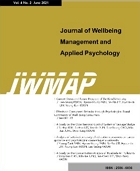 E-ISSN : 2586-6036
E-ISSN : 2586-6036
Eun-gu HAM
Woo-Taeg KWON
Min-Yeong KIM
Hee-Yeon PARK
Abstract
impacting pollutant concentrations. This study investigated particulate matter (PM-10 and PM-2.5) and carbon dioxide levels during cooking under three ventilation scenarios: no ventilation, range hood operation only, and range hood operation with windows open. The experiment used three food types—pork belly, mackerel, and dumplings—prepared on a gas stove. IoT air quality sensors measured pollutant concentrations at specific kitchen and room locations. Results revealed substantial variations in particulate matter increases across different ventilation methods: No ventilation demonstrated the most dramatic pollutant concentration increases, with mackerel showing the highest rise: PM-10 increased 50.9 times, PM-2.5 increased 44 times. Range hood only operation showed moderate pollutant concentration increases, where mackerel again displayed significant rises: PM-10 increased 12.1 times, PM-2.5 increased 9.44 times. The range hood with windows open approach presented the lowest pollutant concentration increases, representing the least impact on particulate matter levels and proving the most effective ventilation method. The study conclusively demonstrated that simultaneous use of natural and mechanical ventilation is most effective in managing indoor air quality during cooking. By providing empirical evidence of ventilation's impact, the research offers practical guidelines for reducing indoor air pollution generated during routine cooking activities
- keywords
- indoor air quality, cooking, ventilation methods, fine dust
- Downloaded
- Viewed
- 0KCI Citations
- 0WOS Citations














